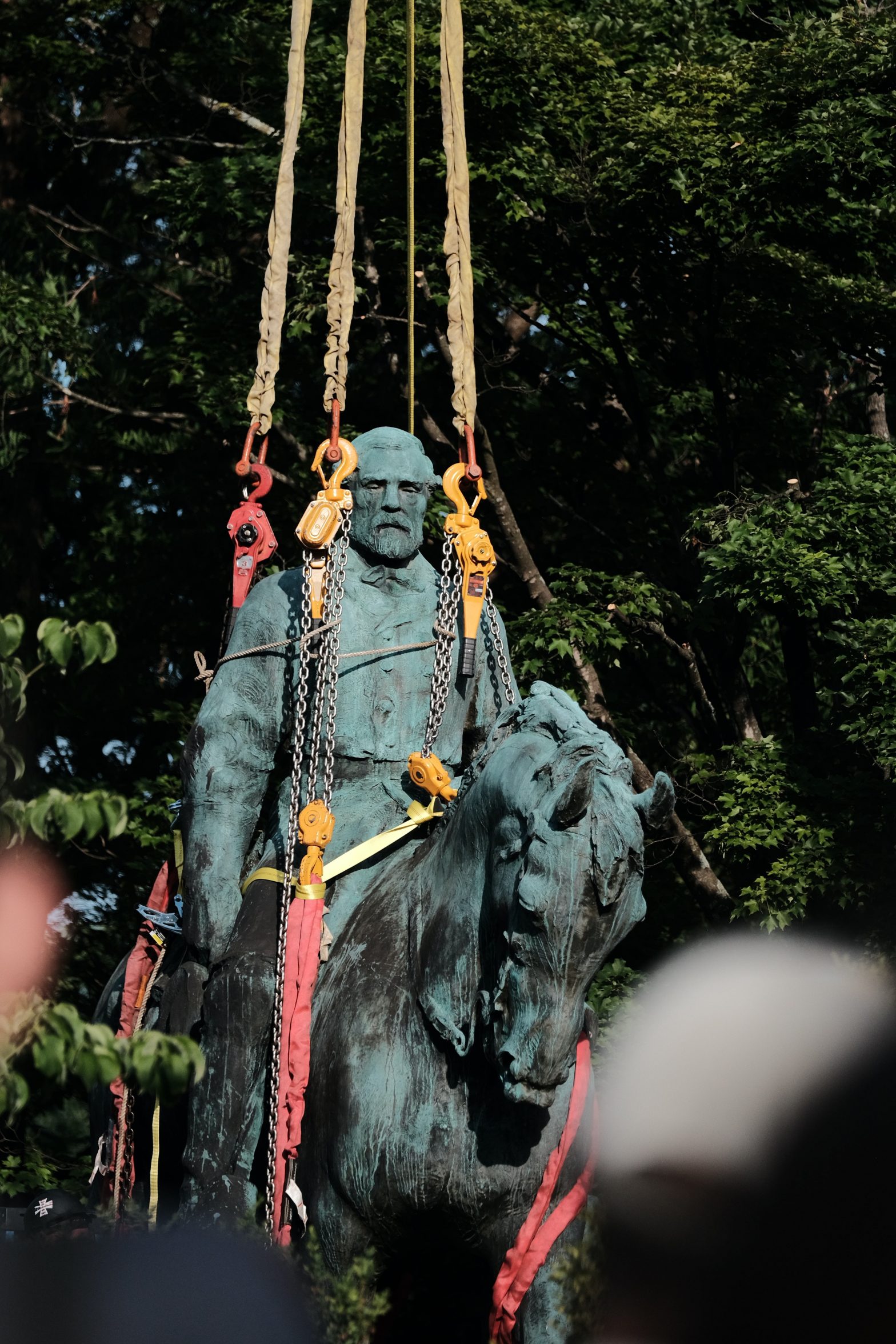Community members gathered at the Jefferson School African American Heritage Center on October 30 to hear the latest on the Swords Into Plowshares project, which seeks to melt down Charlottesville’s Robert E. Lee statue and repurpose its bronze into a new public artwork.
In December, the Trevilian Station Battlefield Foundation and the Ratcliffe Foundation filed a lawsuit against the City of Charlottesville, claiming the city violated state code, the Virginia Public Procurement Act, and the Freedom of Information Act when it donated the statue to the Jefferson School. (The school was initially named as a second defendant, but was removed, and is now a party to the suit.) On October 10, Charlottesville Circuit Court ruled that the lawsuit had grounds to move forward, with a trial date set for February.
While the Jefferson School initially planned a six-month community engagement process, during which Charlottesville residents would discuss ways to represent inclusion through art and public space, the lawsuit has delayed it. But Jefferson School Executive Director Andrea Douglas remains hopeful about where the project currently stands.
“We’re still going. We’re still raising money. We’re still asking the questions,” said Douglas. “We’re still a united front against this court case.”
During the October 10 hearing, the plaintiffs pushed the Jefferson School to disclose the Lee statue’s location to the public, but the two parties later agreed to a protective order allowing only an expert and lawyers from each side to know the statue’s location, marking a victory for Swords Into Plowshares.
UVA professor Frank Dukes, who is leading the community engagement phase of the project, presented the results of a survey that asked community members for input on what should happen to the Lee statue, including the stories the resulting artwork should tell. Respondents were primarily from Charlottesville and Albemarle County, and came from various age groups, including young children.
Stories that respondents thought needed to be told included information about Vinegar Hill, the Jefferson School, McKee Row, and the lives of enslaved and Indigenous people.
Respondents also voiced fears for the project—some felt that art might be too abstract or figurative, or represent an oversimplification of a complex issue. Among those who liked the art idea, common desired themes included incorporating touch or sound, serving a function, and not honoring a single person.
Community engagement meetings have also served as a forum for residents to voice their thoughts. “We’re gonna continue to do this until there’s an opportunity for us to say, ‘Okay, we’ve heard enough from people—we can start creating,’” said Dukes.
Zyahna Bryant, a student activist who first petitioned for the removal of the Lee statue in high school, emphasized that the final product should be treated with the same degree of esteem that had been given to the Lee statue.
“I don’t think it needs to be sad or somber, but I definitely think that it should have some level of respect and honor,” Bryant said.
Other community members hoped the new artwork would provoke dialogue while reflecting a historical consciousness. One suggested incorporating some kind of theatrical form, creating a lively interactive space.
Charlottesville resident Peter Kleeman, who has frequently attended SIP’s community engagement events, said he finds the project to be the only one of its kind he has come across.
“This whole project is such a fabulous idea,” said Kleeman. “The idea of taking a Civil War memorial and making it into something new, taking something that shouldn’t be part of our memorial collection and thinking, let’s transform it into something that meets our ideas for today.”
With the trial set for February 1, the Jefferson School has no plans to slow down.
“We’re deliberately moving forward with a kind of consistency of message that says to the larger world that Charlottesville will make its own decisions about its public spaces,” said Douglas.
